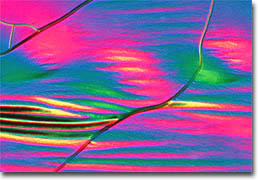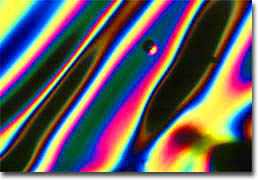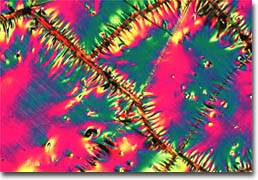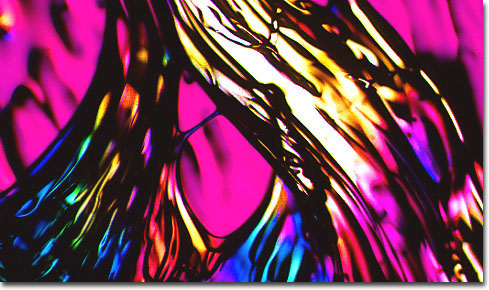|
Polymers are very large molecules that are composed of many smaller subunits, called monomers, connected together by various types of chemical bonds. Found in nature as well as capable of being synthesized in the laboratory, polymers are literally fundamental to life. Indeed, DNA, the genetic blueprint of all living organisms, is itself a type of polymer. The monomers that comprise DNA are better known as the bases adenine, thymine, guanine, and cytosine, each of which contains the sugar deoxyribose, which, in turn, contains three phosphate groups. The sugars are connected together through the phosphate groups to form an alternating chain of phosphate-deoxyribose-phosphate with a base connected to each sugar group. The order of the bases is the genetic code that dictates the information contained in DNA.

Polyalanine
A number of other natural substances are polymers in addition to DNA and the closely related substance RNA. The cellulose that comprises the stems and woody part of plants is a polymer composed of glucose units. Since glucose is a type of sugar, cellulose is considered a polysaccharide, a word that means "many sugars." Starch, another substance commonly associated with plants, is also a polysaccharide, but it is somewhat different from cellulose since it can be dissolved in water. Proteins, which are an essential part of the diets of humans and other animals, are polymers as well, but are comprised of amino acids rather than sugars. Several natural substances that are inorganic are also polymers, such as diamond, quartz, and graphite. In fact, the remarkable hardness of diamond is a result of its three-dimensional linkage of carbon atoms.

Polycarbonate
Though naturally occurring polymers may have been in existence since the beginning of time, synthetic polymers were not introduced to the world until the early twentieth century. An important step on the way to this event was the development of semi-synthetic polymers, such as nitrocellulose, that were formed by altering naturally occurring polymers. The first completely manmade polymer, however, was Bakelite, a plastic developed by Leo Hendrik Baekeland, a Belgian-born chemist who had previously invented Velox, a type of paper for photographic prints that could be developed under artificial, rather than natural, light sources. Formed by mixing carboxylic acid with formaldehyde under high pressure and temperature, Bakelite was introduced to the public in 1909 at a meeting of the New York chapter of the American Chemical Society. Soon after, the inflammable substance was featured in an array of items, such as automobile parts, buttons, billiard balls, and radio knobs. Indeed, Bakelite was so functional that it was even advertised as "the material of a thousand uses."

Surlyn
Plastics are a special kind of polymer that are capable of being formed in a broad range of shapes through various processes, including molding, extrusion, and casting. The success of the first plastic, Bakelite, helped pave the way for the wide array of plastics known today, but the scarcity of certain natural materials, such as latex and silk, created by World War II made synthetic alternatives a necessity rather than a choice, and the plastics industry grew greatly during this time. Some of the many polymers developed in this period were nylon, neoprene, acrylic, SBR, and polyethylene, many of which were utilized for military purposes before they were reconfigured into commercial items introduced for civilian use. Yet, many of these materials are now highly integrated into our daily lives. Polyethylene, for instance, is the common plastic used in kitchen sandwich baggies and nylon is familiar in most households as pantyhose. The tremendous proliferation of plastic products in modern times has become a concern for some since most plastics are made from oil, a source that is available only in a finite supply, and because plastics are rapidly filling landfills since they are not biodegradable.

Polypropylene
Polymers may be differentiated from one another based on a variety of characteristics and are often classified through a number of means. The number of monomers that make up a polymer may, for instance, vary greatly, and those that are particularly large are called high polymers. Also, some polymers, called homopolymers, are only comprised of a single type of monomer, while others, known as copolymers, consist of two or more types of the subunits. The way that the monomers of a polymer are linked is the basis of another common classification system, which is organized into groups of linear, branched, and cross-linked polymers. All polymers may also be categorized as either addition polymers or condensation polymers, depending upon their chemical formula. In addition polymers, such as polystyrene, the molecular formula of the repeating subunit is exactly the same as that of the monomer. A condensation polymer, however, is characterized by the fact that the repeating unit it contains is comprised of fewer atoms than the monomer or monomers it is produced from due to the formation and separation of byproducts, such as water. Polyester and polycarbonates are two well-known types of condensation polymers.
|




